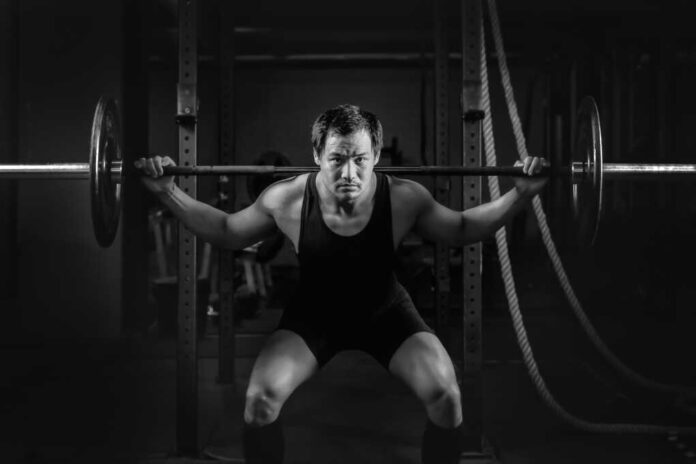
Breaking through a back squat plateau may be as simple as adding seven key accessory exercises that target your body’s weak links, improving both performance and preventing injury.
At a Glance
- Common squat faults include falling forward, knees caving in, and hips shifting during the movement
- Accessory exercises like front squats, box squats, and good mornings directly address weak points in squat mechanics
- Core strengthening exercises are crucial for maintaining proper posture during heavy squats
- Posterior chain development through glute-ham raises and Romanian deadlifts prevents compensatory movements
Understanding Common Squat Faults
The back squat remains a fundamental exercise for building lower body strength, but many lifters struggle with proper form. Falling forward during the descent, knees caving inward, hips shifting laterally, and inadequate quadriceps development are common technical faults that limit progress. These issues not only decrease lifting efficiency but also increase injury risk. Identifying these weaknesses is the first step toward implementing targeted accessory work that addresses specific limitations in your squat mechanics.
According to strength coaches, different squat variations can target specific weaknesses. Low-bar back squats allow lifters to move more weight by engaging larger glute and hip muscles, while high-bar and Platz squats focus on quadriceps development. For those struggling with forward lean, goblet and front squats help maintain an upright torso position while reducing spinal loading. These variations serve as both training tools and diagnostic indicators of where your squat needs improvement.
Essential Posterior Chain Accessories
The posterior chain—comprising the lower back, glutes, and hamstrings—provides the foundation for a powerful squat. Box squats are particularly effective for building these muscles while improving confidence at the bottom position of the squat. They allow lifters to focus on powerful hip drive without worrying about depth. Safety squat bar good mornings target similar muscle groups while addressing potential “mis-grooves” in the squat pattern. These exercises strengthen the exact muscles needed to maintain proper positioning under heavy loads.
Glute-ham raises offer another valuable posterior chain exercise that can be progressively loaded. Unlike machine hamstring curls, they train the hamstrings and glutes in a functional pattern that directly transfers to squatting strength. Romanian deadlifts similarly enhance hip hinge mechanics and glute activation patterns. When performed correctly, these movements create the posterior strength needed to maintain proper back positioning during heavy squats, preventing the common fault of excessive forward lean.
Core and Upper Back Development
A strong, stable core provides the foundation for heavy squatting. The ab rollout specifically enhances core strength in a way that directly transfers to maintaining a neutral spine during squats. Band-resisted planks further develop lat engagement and proper bracing techniques that prevent energy leaks during maximal lifts. These exercises train the core to resist flexion under load—a critical skill when supporting a barbell across your upper back.
Upper back strength is often overlooked but plays a crucial role in squat performance. TRX Y exercises strengthen the upper back muscles responsible for maintaining shoulder mobility and posture during squats. The front rack position in kettlebell elevated split squats similarly challenges upper back strength while simultaneously developing hip mobility and leg drive. This combination of core stability and upper back strength creates the rigid torso necessary for efficient force transfer during heavy squats.
Specialized Squat Variations for Targeted Development
Certain squat variations serve as excellent accessory exercises by addressing specific weaknesses. Front squats force an upright torso position and quadriceps development that directly transfers to back squat performance. Pause squats, where you hold at the bottom position for 2-3 seconds, eliminate the stretch reflex and build starting strength from the most challenging position. Anderson squats, which begin at the bottom position, similarly address sticking points while improving hip mobility.
The Westside Barbell approach to squat training, developed by Louie Simmons, has produced athletes capable of squatting over 1200 pounds. This methodology emphasizes variety in accessory work to prevent adaptation plateaus. Belt squats reduce spinal loading while maintaining lower body development. Sissy squats isolate the quadriceps, enhancing knee joint resilience and balance. Implementing these specialized variations in a structured rotation maximizes strength gains while minimizing overuse injuries to specific joints or muscle groups.


















